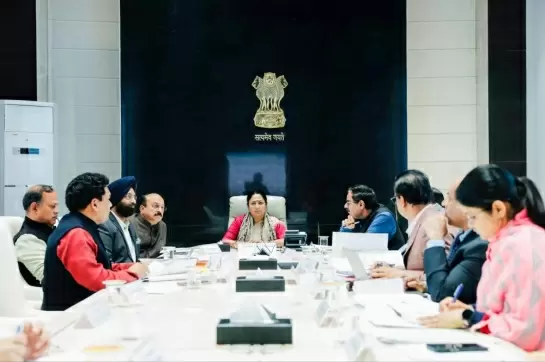Farm fires choke Delhi, stubble monetisation plan fails
01-November-2019
Even as smoke from farm fires in neighbouring states turns the national capital into a virtual gas chamber, a key government initiative aimed at monetising crop residue to prevent farmers from burning it remains a non-starter.
With much fanfare the previous NDA government in November 2017 announced that it has asked central power utility NTPC to procure farm stubble from states like Punjab and Haryana to be used in its fuel mix.
However, even after two years the necessary infrastructure needed to convert crop residue to pellets for use by the power producer remains almost non-existent. The result is that farm fires continue ahead of rabi sowing season creating foul weather in the Delhi with ambient air quality index remaining in the severe zone, dangerously close to emergency zone.
Official sources in NTPC told IANS that for the second year running the power producer is unable to find enough suppliers of pellets. Though the company tendered for procuring upto 18,600 tonnes per day of crop residue for generating power last year, it could hardly get any supplies. Even this year, they have just got one supplier who has agreed to supply farm residue pellets of a mere 107 tonnes per day and that also after almost a fortnight's delay.
"We are willing to procure as much pellets as we can get. The company is offering Rs 5,500 for one tonne of pellet, which is a very remunerative price. But suppliers have to come forward," said the source quoted earlier.
As per estimates, crop stubble in 1 acre of land can produce 2 tonnes of pellets. This could fetch farmers Rs 11,000 for stubble from one acre of farmland.
The plan for preventing farmers from burning the stubble involved state-owned Indian Renewable Energy Development Agency (IREDA) financing pellet manufacturing units, which will then bid for NTPC tender. However, executives at the lending agency indicated that they have not received encouraging response from people willing to set up pellet plants.
"As the stubble is generated just for couple of months, no one wants to invest in an infrastructure that would remain idle for rest of the year. Also, farmers find it easy to burn stubble and ready the land for next cultivation than to put additional labour to take it for sale to pellet makers," said an official in the power ministry.
He added that government may look to further sweeten the deal for pellet makers and farmers to encourage monetisation of stubble rather that its burning. But till that time, the national capital would continue to choke.
NTPC can use 10 per cent of straw pellets in their energy mix. The straw pellets were supposed to be made by start-ups and farming bodies by extracting and crushing the stubble.
In November 2017 , the Central Electricity Authority issued an advisory stating that all capable public and private power generating utilities should endeavour to use 5 per cent to 10 per cent biomass pellets primarily made of agro residue along with coal. This is called biomass co-firing.
With the coal-based generation of over 2,00,000 ME in the country, approximately 100 million tonnes of agro residue can be absorbed for producing power with 10 per cent co-firing using non-torrified pellets. However, if pellets of torrified biomass are used, almost all the surplus biomass can be utilised with even less than 10 per cent co-firing.IANS
this is a smpolke test data
Dense Fog Throws Flight Operations Out of Gear Across North India
Adhir Ranjan Chowdhury Meets PM Modi, Seeks Action on Attacks Against Bengali Migrant Workers
PM Modi Applauds Maiden Voyage of Stitched-Ship INSV Kaundinya From Porbandar to Oman
Unnao Rape Case: 'Don't Let Hate Bury The Truth', Pleads Sengar's Daughter In Viral Open Letter









